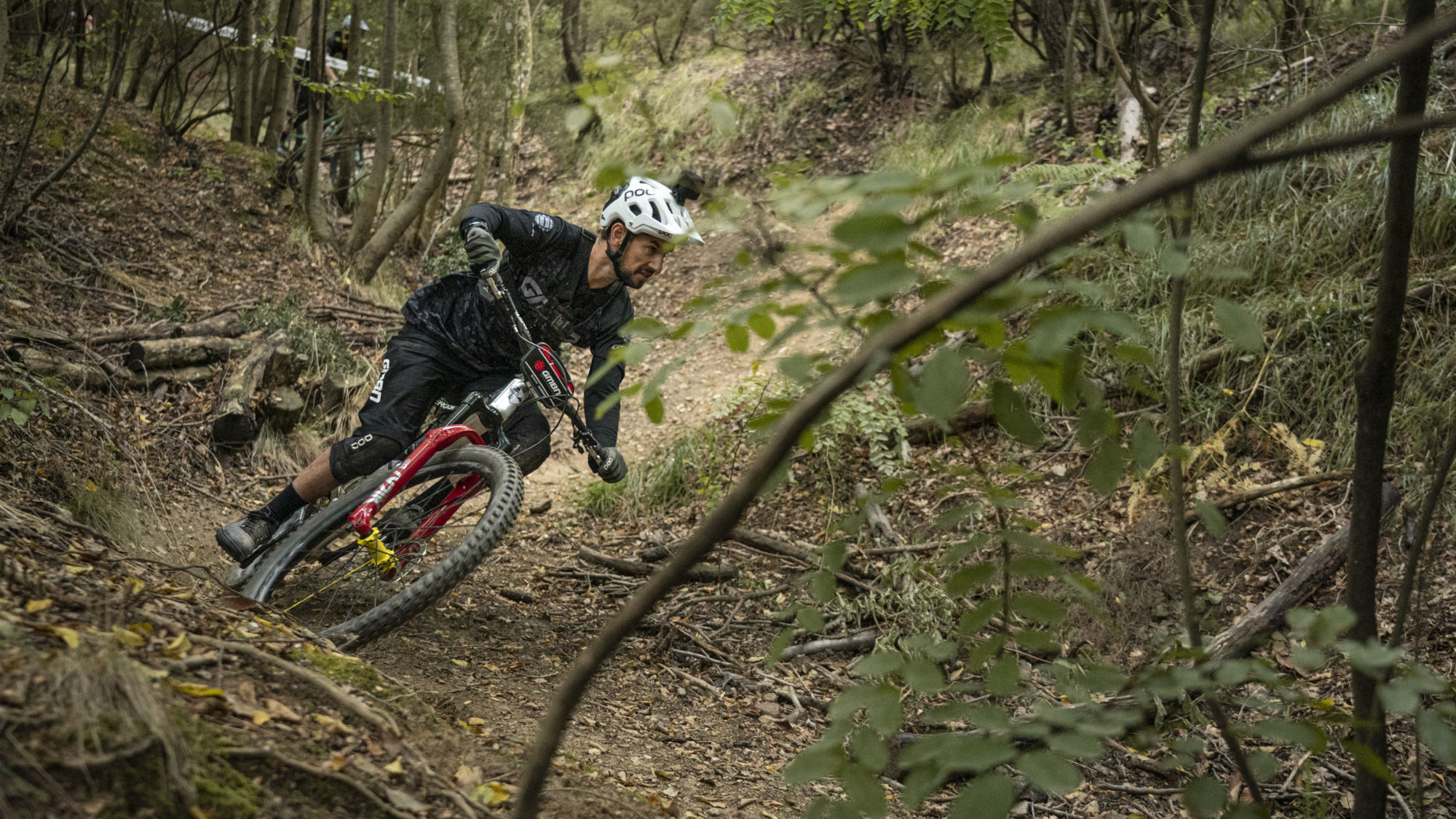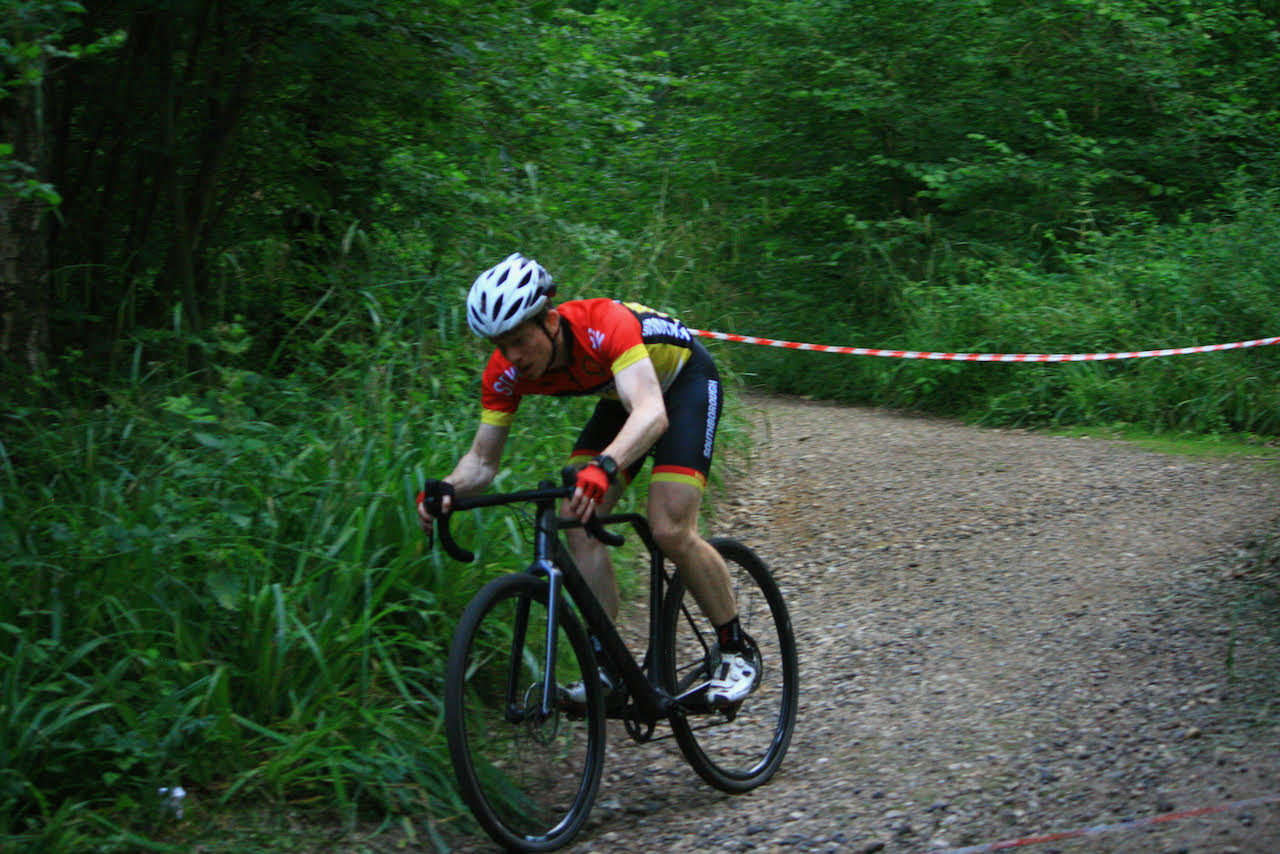Mountain bike racing: how to get started
Top tips and expert advice to help you on your way to competing in your first race

Mountain bike racing is curiously addictive, from the friendliness and the range of brilliant courses, to the whole ritual of getting ready, the ups and downs, and the things you vow to do differently after each race. Whether you’ve just started or you’ve been doing it for years, once you start it’s hard to stop.
The biggest hurdle for non-racers is just doing the first one. Then you discover the wide range of abilities and categories at most race events, and the fact that most people are enjoying their own micro-battles — just to finish, or to make the top half, or to do a bit better than last time — rather than aiming for the podium.
The learning curve is incredibly satisfying. Everything is alien in your first race, from where to get your number, to how fast to start. At multiple times during the race you’ll want to give up or throw up (or both at the same time), but by the end you’ll be super proud, and you’ll start to get an idea of how to make the most of your strengths, and maybe one or two weaknesses to tackle for next time.
So don’t hold back, if you’ve got a bike that works, a little bit of stamina, comfort with basic roots and mud, and a can-do attitude, there’s a race out there for you. Whether it’s downhill, enduro, downcountry or cross-country, read on to find out how to get started.
How to pick a mountain bike race and category
First you’ll want to pick the type of race that suits you. If you prefer your wheels on the ground and you like a non-stop cardio challenge, cross-country (XC) would be a good start. The classic formula is as many laps of a 15- to 30-minute course you can do in a fixed time - often 90-minutes, but sometimes longer options.
If you’re more gravity-oriented, happy with drops and more technical features, and you like the idea of timed sections with recoveries in between, consider enduro. There’s also full-on downhill racing, but its a little harder to get into due to the high levels of technical skill required to ride the course and the demand on equipment. That said there are plenty of downhill events on mellower courses if you look for them.
A local series rather than a national series is a good place to start, and it’s fairly easy to find out how technical the courses are via the race’s social media and website, or just by giving them a call.
Different races have different categories to choose from, to make sure you’re getting something that suits you, apart from by age and gender. Enduro events may ask you to estimate your rough ability level, so they can separate the faster and slower riders. XC races may have specific ‘beginner’, ‘open’ and ‘sport’ categories below the more full-on bands.
Some formats of mountain bike races are particularly conducive to having a good time. In the UK, that includes festivals like the Malvern Classic, team relays like the 12- and 24-hour Mountain Mayhem and the legendary Glentress Seven. Longer, wilder cross-country races like the Hope MTB Marathon series, and the Hopetech Women's Enduro, which is famously newbie-friendly. Or you can try going longer and a little slower, especially if stamina and mental grit are your forte: consider gravel racing — which plenty of people do on hardtails — multi-day events and self-supported adventure races.
You might find that some details are slow to be announced, especially after the COVID years, but 2022 is shaping up to look pretty good for a lot of events.
Six tips to prep for your first mountain bike race
1. Follow the race on Facebook or Instagram
It may have pre-ride videos and tips about which tires may be most suitable for the conditions. They will also pass on any changes to the race program, course or weather that could be useful to know before you turn up.
2. Go with a friend
This can be much more fun, especially if they’ve done one before, as you can learn from their expertise.
3. Get there early
Things always take longer than you expect. It’s great to allow plenty of time for traffic jams, registration, unexpected things with your bike, an unhurried practice lap and a bit more faffing back at your car before race time. Plenty of people allow 90 minutes or even two hours for XC races, and longer for enduro races, where you may have a lot of stages to recce.
4. Be organized
Make sure your bike’s fine a few days before, including your brake pads. Separate out your kit before you leave home, ideally the night before (e.g. what you’ll wear in the race, what you’ll carry in the race, bad weather gear, etc.). Realistically you’ll want to carry at least one drink and a minimalist repair kit in the race. You’ll be able to leave extra drinks at a feed station if it’s a lapped race. You’ll also want to take a layer to keep warm at the start line if it’s cold; you can throw it to the side before the gun goes off. And chuck plenty of tools and spares in the car, in case you notice something wrong in your warmup.
5. Eat and drink beforehand
You need to stay fueled, even if you don’t feel hungry. However remember, no solids in the last 45 minutes or so in the run-up to the race.
6. Take your time on the practice lap
This is a great opportunity for you to learn what’s ahead, and experiment with different lines if you can. Take your time and make the most of the practice lap as you might spot lines or obstacles that are less obvious at race speed.
Five tips for during the race
1. If in doubt, start steady
In cross-country there’s always a fast burst from the start line and if you’re a quick rider there’s definitely an advantage to getting onto the singletrack ahead of any bunch-ups, but there will be plenty of climbs and chances for overtaking later, especially after the first lap, so if in doubt, don’t risk being one of the many people who start to blow up after five minutes, just ride smart and reel ‘em in later
If you are racing an enduro, make sure you know the pace needed to ride the connection segments and try to take it easy. Conserving energy between timed stages means you will have more in the tank when the clock starts. Be sure to check when you need to be at the start of each stage though as there are often cut-offs.
2. Don’t forget what you know
Everything feels different under pressure and it's easy to forget riding fundamentals. Try to remind yourself of all the times you’ve smashed the tricky stuff in training, don’t try anything new, and you’ll be golden.
3. Seek flow
Smooth riding is always faster riding. One great tip if you’ve blown up and fallen off the pack you were trying to stick with is to just focus on beautiful flowy riding for a while, touching your brakes as little as you can. Worst case, you’ll have had some great technique practice on a neat course; best case you’ll catch that pack up again
4. Be kind
This always pays off. Not too kind though, while you should always let riders pass if you’re being lapped, you can ignore the obnoxious riders calling you to move aside in the first five minutes just because they’ve fluffed their start. Beyond that, being cheerful to marshalls and encouraging other riders makes you feel better as well as them.
5. You’re capable of more suffering than you think.
Race well, friend. You can do this!

Sean has old school cycle touring in his blood, with a coast to coast USA ride and a number of month-long European tours in his very relaxed palmares. Also an enthusiastic midpack club cyclocross and XC racer, he loves his role as a junior cycle coach on the Kent/Sussex borders, and likes to squeeze in a one-day unsupported 100-miler on the South Downs Way at least once a year. Triathlon and adventure racing fit into his meandering cycling past, as does clattering around the Peak District on a rigid Stumpjumper back in the day.
Height: 173cm
Weight: 65kg
Rides: Specialized Chisel Comp; Canyon Inflite CF SLX; Canyon Aeroad; Roberts custom road bike
